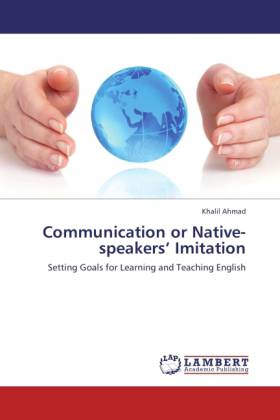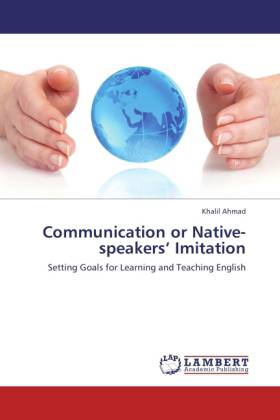
- Afhalen na 1 uur in een winkel met voorraad
- Gratis thuislevering in België vanaf € 30
- Ruim aanbod met 7 miljoen producten
- Afhalen na 1 uur in een winkel met voorraad
- Gratis thuislevering in België vanaf € 30
- Ruim aanbod met 7 miljoen producten
Zoeken
Communication or Native-speakers' Imitation
Setting Goals for Learning and Teaching English
Khalil Ahmad
Paperback | Engels
€ 48,45
+ 96 punten
Omschrijving
The book aims at the comparison of native-speaker model (native-speakers' imitation) and bilingual communicative model (based on the purpose of communication) in terms of appropriateness for learning and teaching English as a second language. ESL/EFL learners are expected that they would achieve native-like competence in English language. Such expectations from the learners are often translated into an utter disappointment because native-speaker model is unattainable in a multilingual setting. The study looks into the matter and diagnoses the reasons as to why such model is not achievable. First, the defining characteristics of native and non-native speaker; native-speaker model were re-examined in literature. Then, the perceptions of the students and teachers regarding their preferred model, their purposes in learning English, their attitudes towards English language, and the problems associated with learning and teaching of English in following native-speaker model were explored through questionnaires and interviews. The results indicated that the students and teachers opted for bilingual communicative model as their preferred model for learning and teaching English
Specificaties
Betrokkenen
- Auteur(s):
- Uitgeverij:
Inhoud
- Aantal bladzijden:
- 116
- Taal:
- Engels
Eigenschappen
- Productcode (EAN):
- 9783845433165
- Verschijningsdatum:
- 23/08/2011
- Uitvoering:
- Paperback
- Formaat:
- Trade paperback (VS)
- Afmetingen:
- 152 mm x 229 mm
- Gewicht:
- 181 g

Alleen bij Standaard Boekhandel
+ 96 punten op je klantenkaart van Standaard Boekhandel
Beoordelingen
We publiceren alleen reviews die voldoen aan de voorwaarden voor reviews. Bekijk onze voorwaarden voor reviews.











